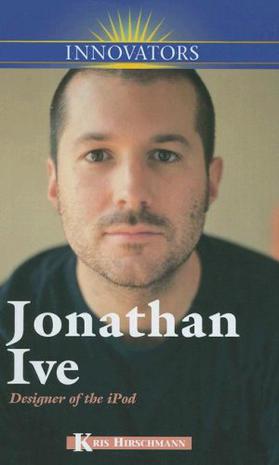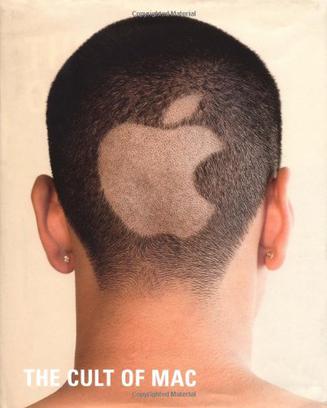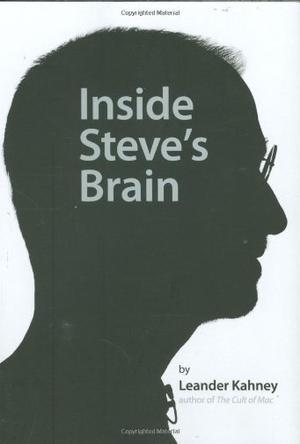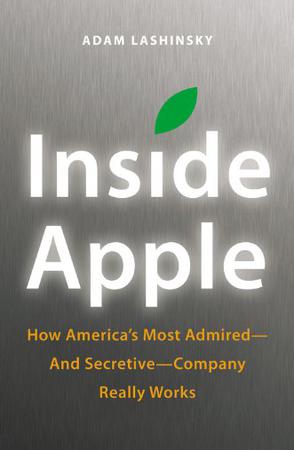-

苹果电脑案例
目录 导言 两项产品问世的故事 Lisa问世 Lisa退场 截至目前结局比较好的故事 重新发明一个产业 如火箭般急速上升 苹果模式 第一章 惊奇与赚头 当阿拉丁遇上小精灵 一致性与连贯性 追求毛利率 从惊奇与赚头中获得的启示 第二章 寻找未来 例子 一次命中,两次挥空 投入研发经费 少可能代表多 睡好觉 在寻找未来中获得的启示 第三章 令他们瞠目结舌 设计:从赤裸到规范 乔布斯的美学 没有乔布斯当家时的设计 再度回到未来 圆滑优雅者将征服世界 从令他们瞠目结舌获得启示 第四章 保护家中瑰宝 无变化的改变 黑色内核 不使用WIMP:菲尔和鲍伯 让仿制品加入市场 从救星到流水软件 NeXT解决方案 逐步地修正:从“狂想曲”到OS X 从保护家中瑰宝所获得的启示 第五章 让朋友贴近,但不要贴得太近 这机器能做什么 大象坐在它想坐的任何地方 宣讲福音101 在困境中的发展 问题的程度 亲吻与挽救 与朋友保持合理程度的关系中得到的启示 第六章 信守承诺 第七章 建立教派 第八章 营销学问大 第九章 保持你的酷风格 第十章 咎责坏家伙 第十一章 调整你的领导人 第十二章 矫正你的计划 -

Jonathan Ive
-

The Cult of Mac
There is no product on the planet that enjoys the devotion of a Macintosh computer. Apple's machines have legions of loyal, sometimes demented fans. The Cult of Mac surveys the devoted following that has grown up around Macintosh computers. Like fans of a football team or a rock group, Macintosh fanatics have their own subculture, with clearly defined obsessions, rites, and passages. Famously dedicated to their computers, many Mac fans eat, sleep, and breathe the Macintosh. Fans who get Mac tattoos and haircuts, people who attend Apple Store openings like they are Grateful Dead shows, counterculture icons who love the Mac, people who turn old Macs into aquariums (or bongs), Ellen Fein lookalike contests, erotic fiction featuring Steve Jobs; it's all here. Technology reporter Leander Kahney exposes all sides of Mac fanaticism, from the innocuous to the insane. -

Return to the Little Kingdom
Twenty five years later, revisiting the first authorized biography of Apple and its co-founder and celebrity CEO, Steve Jobs In 1984, The Little Kingdom: The Private Story of Apple Computer told the story of Apple’s first decade alongside the histories of Steve Jobs and Steve Wozniak. Now, completely revised and expanded, Return to the Little Kingdom is the definitive biography of Apple and its founders from the very beginning. Moritz brings readers inside the childhood homes of Jobs and Wozniak and records how they dropped out of college and founded Apple in 1976. He follows the fortunes of the company through the mid-1980s, and in new material, tracks the development of Apple to the present and offers an insider’s profile of Jobs, whose genius made Apple the powerhouse it is today. Required reading for everyone who’s ever listened to music on an iPod, Return to the Little Kingdom is timely and thorough, and the only book that explains how Steve Jobs founded the company that changed our world. -

Inside Steve's Brain
Steve Jobs has turned his personality traits into a business philosophy. Here’s how he does it. It’s hard to believe that one man revolutionized computers in the 1970s and ’80s (with the Apple II and the Mac), animated movies in the 1990s (with Pixar), and digital music in the 2000s (with the iPod and iTunes). No wonder some people worship him like a god. On the other hand, stories of his epic tantrums and general bad behavior are legendary. Inside Steve’s Brain cuts through the cult of personality that surrounds Jobs to unearth the secrets to his unbelievable results. It reveals the real Steve Jobs—not his heart or his famous temper, but his mind. So what’s really inside Steve’s brain? According to Leander Kahney, who has covered Jobs since the early 1990s, it’s a fascinating bundle of contradictions. Jobs is an elitist who thinks most people are bozos—but he makes gadgets so easy to use, a bozo can master them. He’s a mercurial obsessive with a filthy temper—but he forges deep partnerships with creative geniuses like Steve Wozniak, Jonathan Ive, and John Lasseter. He’s a Buddhist and anti-materialist—but he produces mass-market products in Asian factories, and he promotes them with absolute mastery of the crassest medium, advertising. In short, Jobs has embraced the traits that some consider flaws—narcissism, perfectionism, the desire for total control—to lead Apple and Pixar to triumph against steep odds. And in the process, he has become a self-made billionaire. In Inside Steve’s Brain , Kahney distills the principles that guide Jobs as he launches killer products, attracts fanatically loyal customers, and manages some of the world’s most powerful brands. The result is this unique book about Steve Jobs that is part biography and part leadership guide, and impossible to put down. It gives you a peek inside Steve’s brain, and might even teach you something about how to build your own culture of innovation. -

Inside Apple
INSIDE APPLE reveals the secret systems, tactics and leadership strategies that allowed Steve Jobs and his company to churn out hit after hit and inspire a cult-like following for its products. If Apple is Silicon Valley's answer to Willy Wonka's Chocolate Factory, then author Adam Lashinsky provides readers with a golden ticket to step inside. In this primer on leadership and innovation, the author will introduce readers to concepts like the "DRI" (Apple's practice of assigning a Directly Responsible Individual to every task) and the Top 100 (an annual ritual in which 100 up-and-coming executives are tapped a la Skull & Bones for a secret retreat with company founder Steve Jobs). Based on numerous interviews, the book offers exclusive new information about how Apple innovates, deals with its suppliers and is handling the transition into the Post Jobs Era. Lashinsky, a Senior Editor at Large for Fortune, knows the subject cold: In a 2008 cover story for the magazine entitled The Genius Behind Steve: Could Operations Whiz Tim Cook Run The Company Someday he predicted that Tim Cook, then an unknown, would eventually succeed Steve Jobs as CEO. While Inside Apple is ostensibly a deep dive into one, unique company (and its ecosystem of suppliers, investors, employees and competitors), the lessons about Jobs, leadership, product design and marketing are universal. They should appeal to anyone hoping to bring some of that Apple magic to their own company, career, or creative endeavor.